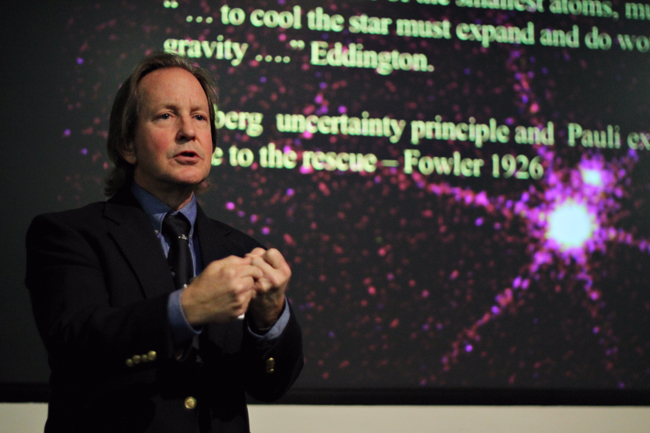At the 22nd Annual Great Lecture in Astronomy that was held Saturday, professor Don Winget said a white dwarf is a star simple enough to hope to understand but complex enough to help researchers learn something new.
A white dwarf is the core of a star left over after its outer layers have been shed.
Winget said this talk was particularly important to him because this year marks the 75th anniversary of the McDonald Observatory, where he conducts most of his observational research.
“It’s the grand old lady of the mountain and it’s still doing cutting edge work and beating competitors with the largest telescopes on the planet,” Winget said.
Winget, whose research at the observatory focuses on white dwarfs, said white dwarfs are the endpoint of evolution for most stars.
“97 to 98 percent of all stars either are or will become white dwarf stars,” Winget said. “That includes our own Sun, so as we look at white dwarf stars we’re looking at our own future.”
Winget said part of his research with white dwarfs involves cosmochronology, a field of study that attempts to define the age and evolutionary history of our galaxy.
“You can measure the age of a population [of stars] from the temperature of the coolest white dwarf stars there,” Winget said.
Winget said the participation of undergraduate and graduate students in research is important.
Don Flournoy, a UT alumnus and Ohio University professor who has donated to the McDonald Observatory, said he thought the new information he learned about white dwarfs was interesting because he hadn’t fully understood their behavior previously.
“I didn’t realize they were binary stars,” Flournoy said. “I thought white dwarf stars existed by themselves, but evidently that’s not the case. There’s always another white dwarf beside it.”
Winget said the true allure of science is being able to discover what no one else knows.
“We do science for one real reason,” Winget said. “It’s that moment, when it’s a theoretical calculation you do [or] an observation you make, it doesn’t matter how large or small it is, but there’s one moment where you know something about the universe that no human being who’s ever lived before has ever known.”


















